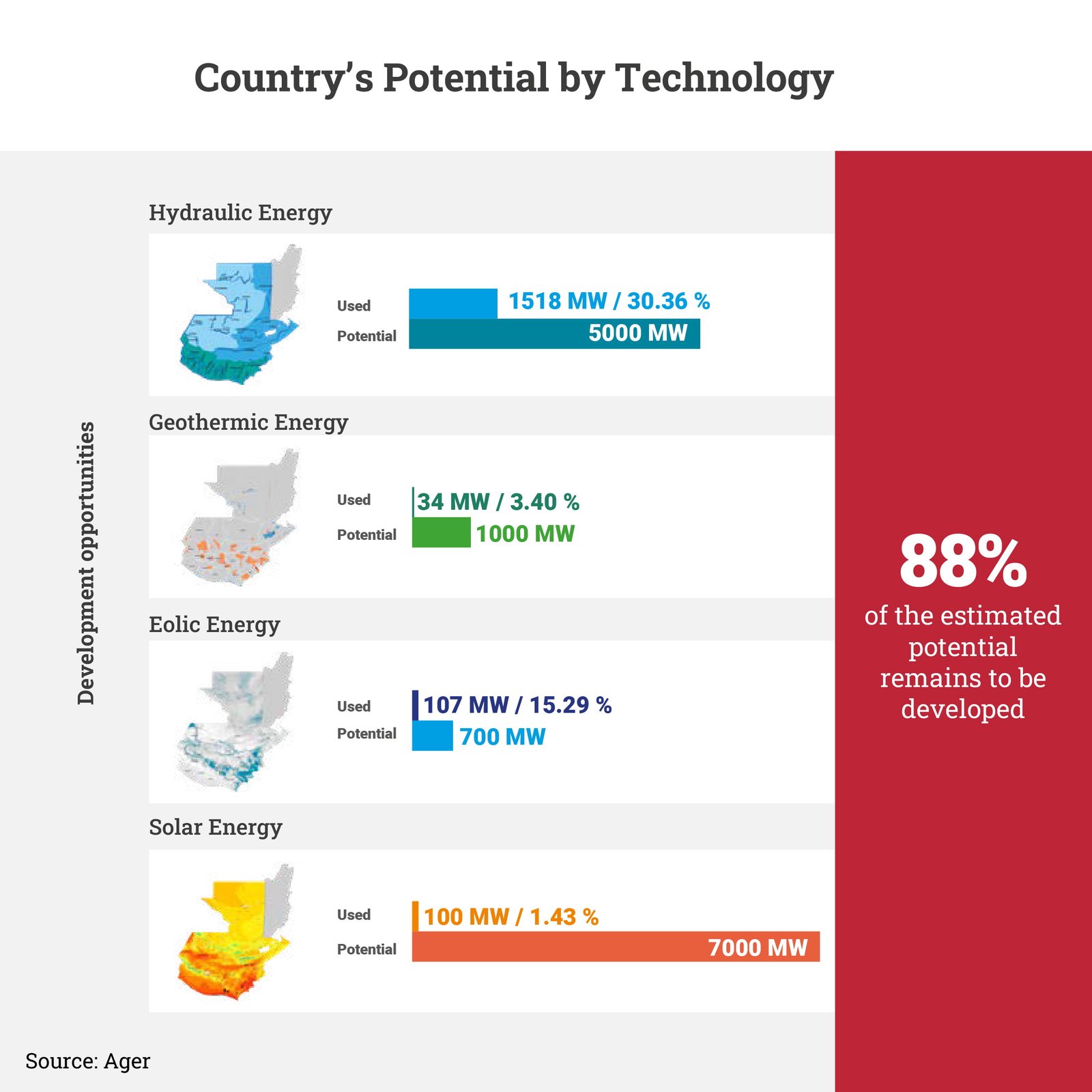
2024 is expected to be a year full of opportunities in Guatemala's energy sector. Currently there are hydro, geothermal, wind and solar energy projects in the country, and they are only reaching 12% of Guatemala's renewable potential. During the first weeks of the year, our Energy and Natural Resources team was active in participating in a series of forums where these opportunities were discussed. Here, we share the most relevant information.
Supply in the Electric Sector
On January 19, 2024, the Central American Business Intelligence (CABI) presented the study "The Importance of the Electricity Sector Supply tor the Country's Development".
The publication forecasts an accelerated growth in the demand for electric supply in the coming years, due to the following factors:
- Population growth, which is estimated to increase approximately 2.6 million people between 2023 and 2035.
- Guatemala is the country with the youngest population in Latin America, at an average of 26 years. In addition to providing a considerable labor force, this will result in the establishment of new households and the development of more infrastructure and service requirements.
- The accelerated urban transition is causing the decentralization of the city and the creation of intermediate cities.
- Guatemala's potential to attract foreign investment projects and increase industrialization in nearshoring projects.
The study highlights that while demand has grown by approximately 3.4% annually, supply has only grown by approximately 1.5%. This merits immediate actions to promote investment in new power plants to ensure coverage of future needs, maintain competitive prices and continue an orderly transition to diversified sources of renewable energy.
Renewable Energy
On January 31, the Association of Renewable Energy Generators (AGER) hosted the first Renewable Energy Summit. The event was attended by national and foreign experts from the electricity sector, officials from related entities and the new president Bernardo Arévalo.
The experts emphasized that Guatemala has only taken advantage of 12% of its renewable potential and analyzed the factors required to take timely and efficient measures to make a sustainable agenda a reality. The country's potential by technology is as follows:

The AGER presented President Arévalo with the "Strategy for Energy Transition in Guatemala, an Agenda for Sustainable Electricity Transformation".
In this document they analyze and propose important solutions:
- Implementation of energy policies that allow reaching the 80% renewable generation goals.
- The launching of public bids for the distribution and contracting of unregulated demand and thus guaranteeing supply.
- Expansion of transmission capacity, with emphasis on areas with high renewable generation potential.
- Compliance with Guatemala's proposed Nationally Determined Contributions (NDCs) related to the reduction of greenhouse gas emissions.
- Create the necessary regulations to comply with Convention 169 of the International Labor Organization (ILO) and the government's consultations with indigenous peoples.
- Promote the country's renewable potential, with emphasis on technologies that have low participation in the current matrix.
- Comply with deadlines and prioritize administrative procedures related to the energy sector.
New Policy at the Ministry of Energy and Mines
On February 7, we attended a conference at the Ministry of Energy and Mines (MEM) with a series of stakeholders from the energy sector.
The new Minister, Alberto Pimentel Mata, presented the new government’s plan for the energy sector, focused on ambitious objectives such as the electrification of 100% of the territory, guaranteeing access to safe, sustainable and modern energy, adopting urgent measures to combat climate change and aiming at the sustainable use of our natural resources.
The presentation made it clear that the new government is willing to support sustainable generation, encourage investment and take actions to increase the country's competitiveness. All this will generate important opportunities in view of the expected supply and transmission grid tenders.
***
We hope this information was of interest to you. If you have any questions or would like to know more, please do not hesitate to contact us.


